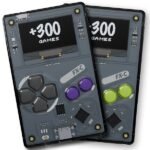Half-Life 2 is arguably the greatest first-person shooter ever, certainly of the 2000-2010 era, but it wouldn’t have existed without Half-Life. It is no coincidence that the original was arguably the best FPS of the 1990s.
But playing the original 25 years later isn’t as pleasant as it should be. The remake, Black Mesa, is a superb alternative, but it changes the experience somewhat. If you want the original Half-Life, Black Mesa isn’t it; consider the ways George Lucas “tweaked” his original Star Wars movies in the 1990s, before and after The Phantom Menace and Attack of the Clones, and you’ll see the difference.
The Half-Life ray tracing mod – which is available completely free – is the original game, improved. Those improvements are visual only; the G-Man isn’t now played by Ty Burrell, and Gordon Freeman’s mother isn’t a slave.
But when I say “visual only” I’m drastically underselling the improvements to the game. Ray tracing is intended to create more atmospheric graphics by determining which in-game characters and objects should be in shade, and which should be in light. This adds depth to the visuals, and is a technique used in modern games.
Applying ray tracing to older titles like Half-Life makes them look amazing, and at worst gives you an excuse to replay.
This has been developed by the creator as the Doom and Quake ray tracing mods, and requires the original Half-Life (get it on Steam if you inexplicably don’t own it). After downloading the Half-Life ray tracing mod, follow the instructions to get the ray tracing mod running and enjoy the rest of your evening, Mr Freeman.
Affiliate Disclosure: Some of the links in this post may be affiliate links, which means I may earn a small commission if you make a purchase through those links. This comes at no extra cost to you. Thank you for your support!
Christian Cawley is the founder and editor of GamingRetro.co.uk, a website dedicated to classic and retro gaming. With over 20 years of experience writing for technology and gaming publications, he brings considerable expertise and a lifelong passion for interactive entertainment, particularly games from the 8-bit and 16-bit eras.
Christian has written for leading outlets including TechRadar, Computer Weekly, Linux Format, and MakeUseOf, where he also served as Deputy Editor.
When he’s not exploring vintage consoles or retro PCs, Christian enjoys building with LEGO, playing cigar box guitar, and experimenting in the kitchen.





